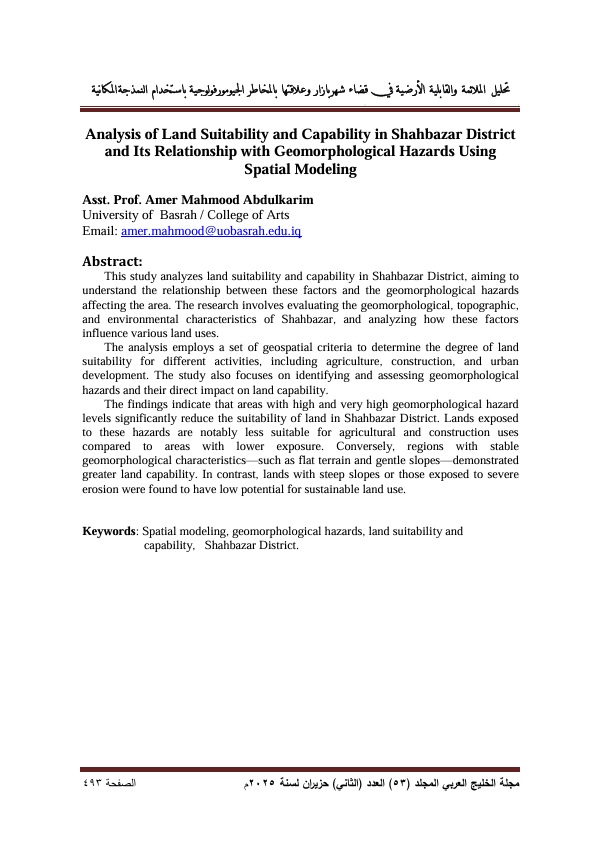Analysis of Land Suitability and Capability in Shahbazar District and Its Relationship with Geomorphological Hazards Using Spatial Modeling
Keywords:
Spatial modeling, geomorphological hazards, land suitability and capabilityAbstract
This study analyzes land suitability and capability in Shahbazar District, aiming to understand the relationship between these factors and the geomorphological hazards affecting the area. The research involves evaluating the geomorphological, topographic, and environmental characteristics of Shahbazar, and analyzing how these factors influence various land uses.
The analysis employs a set of geospatial criteria to determine the degree of land suitability for different activities, including agriculture, construction, and urban development. The study also focuses on identifying and assessing geomorphological hazards and their direct impact on land capability.
The findings indicate that areas with high and very high geomorphological hazard levels significantly reduce the suitability of land in Shahbazar District. Lands exposed to these hazards are notably less suitable for agricultural and construction uses compared to areas with lower exposure. Conversely, regions with stable geomorphological characteristics—such as flat terrain and gentle slopes—demonstrated greater land capability. In contrast, lands with steep slopes or those exposed to severe erosion were found to have low potential for sustainable land use.




